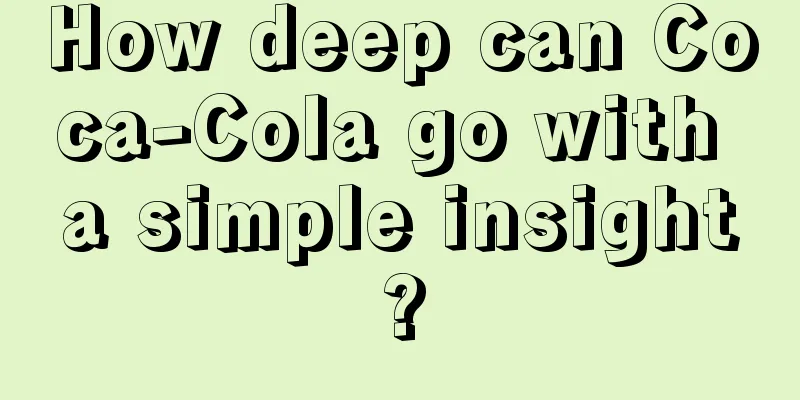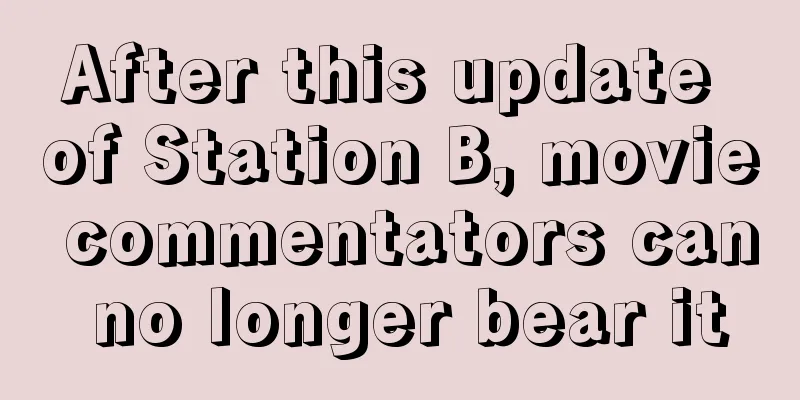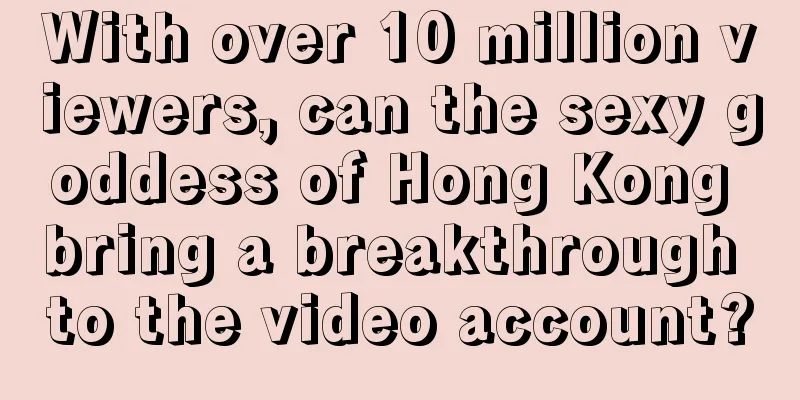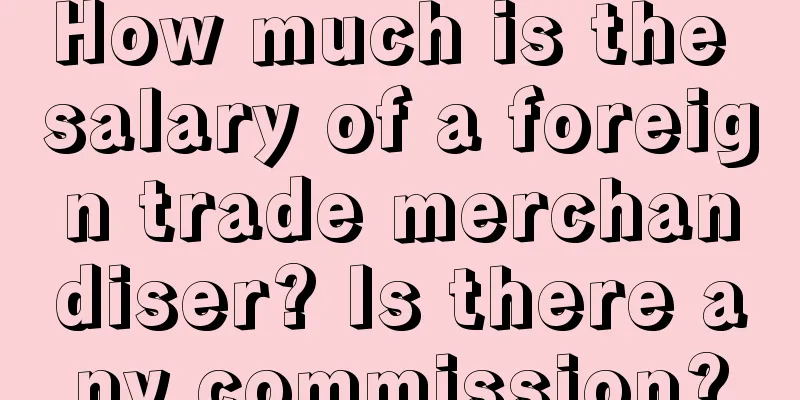How deep can Coca-Cola go with a simple insight?

The Paris Olympics have come to an end, but marketers’ DNA is still at work. I don’t know if you are like me. Recently, I often see Coca-Cola related posters and videos on Xiaohongshu or Weibo. There are several times when I was really touched. When I saw the hug between Quan Hongchan and Chen Yuxi, I couldn’t help but think of the hardships and glory they have gone through. Then I suddenly realized that I didn’t seem to think of Coca-Cola as a beverage brand. In the 100 years since Coca-Cola was founded, there have been two very important drinking moments, one is coke with meal, and the other is pause that refreshes. From the subjective perception of consumers, this is somewhat close to a "functional" brand. If you only talk about functions, you will often become the one being chosen. The smart thing about Coca-Cola is that it has continuously increased its brand potential over the years, making consumers want it and attracting people to actively choose it. I calculated that Coca-Cola has been in China for nearly 50 years, and Olympic marketing has been carried out since the 9th Olympic Games in 1928. In fact, similar event marketing has been done countless times, and it is easy to become superficial. This time, Coca-Cola has abandoned many complicated things and, based on the spirit of “embracing the moment, let us win together”, hopes to bring people closer, connect you and me, embrace the collision between different cultures and individuals, and find more beautiful possibilities by emphasizing the spirit of “embracing differences”. The more I look into this case, the more I think the idea of this campaign is brilliant. It not only transcends the traditional focus on winning or losing, cheering for Olympic athletes, but also brings inspiration to ordinary people like us. Next, let’s take a look at how Coca-Cola refines and deepens an insight. 1. Magnify the “hug moment”After studying the Coca-Cola case, I noticed a fact that I had previously overlooked: hugging is the most common action that occurs in the Olympic Games. The hug here is not limited to physical contact, but also includes emotional eye contact and so on. Let me first talk about the Coca-Cola Olympic theme series posters that left a particularly deep impression on me. During the Olympic Games, these posters are basically updated around the clock, focusing on the "hug moment" and revolving around three major scenes: winning gold medals, sportsmanship, and personal discussions. They combine the Olympic spirit of mutual understanding, friendship and unity to deepen Coca-Cola's existing brand awareness. I believe that the audience who watched the competition deeply remembered the two hugs of diving athletes Quan Hongchan and Chen Yuxi, one after winning the gold medal in the double jump, and the other after the end of the single competition. At that time, CCTV described this pair of dazzling twin stars, "They did not alarm the swimming pool, but amazed the whole world." Coca-Cola used a poster to freeze the precious hug, which is worth a thousand words and full of story. As netizens said, the friendship between Quan Hongchan and Chen Yuxi is like the real-life version of "My Brilliant Friend". They have been with each other for many years, sharing the same pressure, supporting each other spiritually, and pursuing the same ideal light. A very detailed and real insight, an extremely simple lens language, silently tells the moving story of the gold medal on and off the stage. No matter you win or lose, no matter who you are, embracing this moment means "winning together". Such a concept has its own shocking vitality. With the right starting point and foothold, Coca-Cola does not need any extra marketing actions to pry users to actively spread the word. In terms of omni-channel, Coca-Cola covers CCTV channels, various social media platforms and outdoor targeted terminals, and the content expression also has different focuses. Let me tell you about a few things I saw. As a global partner of the Olympics, Coca-Cola worked with CCTV for the first time this year to create content for the entire Games. From the opening to the closing, CCTV used CCTV's camera to broadcast 30-second short films every day to reinforce the "Embrace the Moment" mentality. Different short films, based on different character relationships, emphasize that "embrace" is a common language for people all over the world. No matter where they come from, everyone can feel the power of an embrace. This is the first time that Coca-Cola has joined hands with CCTV and its online channels to speak out. The brand calls on everyone to embrace different skin colors, genders, cultures and challenges, to embrace everything, to "win" by being open and inclusive, and to "win" by daring to challenge, to open up the landscape, to integrate the perspectives of the times, and to interpret the connotation of the Olympic spirit. In addition to the omni-channel exposure in cooperation with official media, Coca-Cola also launched outdoor advertising for the first time throughout the Olympic cycle, combining "Hug Moments" posters and short films, updating materials daily, and laying out office buildings and other scenes, achieving stereo and surround panoramic exposure offline. Coca-Cola has done so much, but do users have a specific perception of it? Judging from the secondary dissemination of the posters and short films by netizens, the answer is yes. According to statistics, during the entire Olympic Games, Coca-Cola released more than 267 real-time contents, captured the hugging moments of 136 athletes, and at least 3.85 million people participated in the "Hug Relay". In this relay session, not only did celebrities such as Yang Yang and Wang Sulong join in the topic, but many ordinary users also participated in it, showing their different ways of hugging. To this day, if you search for "Coca-Cola Hug Relay" on social platforms, you will still see people constantly bringing up the topic and posting various offline check-in updates. The participation of nearly four million ordinary people once again proves that Coca-Cola's insight into "embracing the moment" fits the emotional needs of users at this stage. This form of expression is also popular with everyone, which can trigger super long-tail tap water dissemination. Facing the great test of Olympic marketing, Coca-Cola's homework has not only deep insight, but also delicate content, and a wide range of channels. It has grasped all the emotions and scenes, and finally combined it with light interaction to break the circle context of age, gender, occupation, and background experience, so that more people can be attracted by it as soon as they see it. This kind of content not only brings immediate emotional stimulation and business conversion to users, but more importantly, it enhances brand potential in a subtle way. 2. Become a carrier of the spiritual power of ordinary peopleThe core of brand potential is to create a sense of yearning. The traditional impression of Olympic marketing is that it either only promotes grand scenes and indulges in self-entertainment, which is too far away from ordinary people and cannot attract users; or it focuses on repetition and short-term and fast-paced marketing, "going for the heart but not the heart", regardless of whether users like to watch it or not. Coca-Cola's "Embrace the Moment" is not limited to showing the relationships between people in the stadium, nor does it focus on winning or losing. It further expands its vision to the people outside the stadium, making the captured characters more personal and the sportsmanship more vivid and detailed. The brand does not conduct promotional marketing for users. Every fragmented content it releases is related to the real life of ordinary people. For example, in the arena, take the "Shatou" combination as an example. Table tennis players Sun Yingsha and Wang Chuqin, who made it all the way to the mixed doubles finals, can be said to have inspired each other and had a tacit understanding, and were praised by netizens as "the chosen mixed doubles". Coca-Cola recorded the hug symbolizing the two people meeting at the top, and released a poster on its official Weibo to celebrate the mixed doubles championship, and simultaneously called for a "hug relay" to attract more fans and ordinary audiences to join and cheer for them. In such a context, Coca-Cola uses itself as a bridge of emotional transmission to help the audience get closer to the passionate arena. The audience and athletes share the joy of success, transcending time and space, and achieving "win together" in another sense, allowing the deep national emotions to be released at this moment and promoting the topic #Embrace this moment and let us win together# to a total online reading volume of 750 million. It is worth mentioning that Coca-Cola not only focuses on "winning", but also focuses on the meaning behind each hug moment, using a level-headed partnership attitude to form an empathetic connection with ordinary users. Now let’s talk about the story on the field. Many netizens felt sorry for gymnast Zhang Boheng, thinking that he played his best in the team competition, but unfortunately won a silver medal. After the competition that day, the topic #张博恒要破了# on the social platform became a hot search. Coca-Cola quickly paid attention to this and, as the "mouth substitute" of the entire network audience, cheered him up with the words "Cha Cha will not break, move forward happily". This simple move brought huge emotional value to both athletes and users. Thus, Coca-Cola once again told everyone with practical actions that no matter whether they win or lose, "embrace this moment and let us win together". At this moment, Coca-Cola has transcended the role of a brand and become a manifestation of spiritual power, giving countless ordinary people who are struggling the strength to move forward. From a perspective outside the stadium, Coca-Cola also provided some clever ideas. I can clearly feel the brand team's sensitivity to hot topics and strong execution capabilities. In the women's singles table tennis round of 32, Chinese player Sun Yingsha played against Ni Xialian. This was a match called "world's first" and "world's only" by the official media. Although she stopped here, 61-year-old Ni Xialian sent her most sincere congratulations with a bright smile. Coca-Cola quickly contacted her and invited her to share her post-match feelings. Whether on or off the court, whether you advance or not, how long you have been in the industry, the phrase "different generations, the same age of playing" does not change the spirit of sports. Seeing this, we will deeply understand: Even during the peak consumption season of summer, coupled with the Olympic Games that attracted global attention, Coca-Cola was still able to talk about its drinking moment in a very restrained manner. It did not deliberately create drinking scenes, but instead returned to the masses and used easy-to-understand spiritual power to conduct brand narratives, "transferring" people's attention from the Olympics to brand potential and penetrating the minds of consumers. Similar to the year-round campaign rhythm of many fast-moving consumer goods brands, Coca-Cola's Olympic project was officially launched as early as April. For marketers, the difficulty lies in how to make users feel and achieve the advancement of the theme emotion in a four-month period. It is precisely from the theme of the first stage that Coca-Cola has begun to concretize the spiritual power of ordinary people. In the period from April to June before the Olympics, Coca-Cola realized that the public always paid attention to the Olympic athletes and cheered them on, but in daily life, everyone needs encouragement the most. Therefore, Coca-Cola proposed the creative theme "Open the lid and make a pop, cheer and win gold", calling on young people to focus on themselves first and encourage each other in the arena of life and study. Similar sentiments continued into July and August, with omni-channel actions based on “embracing the moment”. While paying attention to the Olympic athletes, we also paid attention to ourselves. The underlying thinking remained unchanged, sublimating the brand values. With both steps taken correctly, the increase in brand awareness was a natural result. From April to August, Coca-Cola received more than 25 billion exposures and achieved 11 million interactions. Why do ordinary people like us watch the Olympics? Because deep down, it is a way for us to express our emotions and project a strong sense of self-identity. Similarly, why do ordinary people drink Coca-Cola? Over the years, we may have drunk for fun or to celebrate... but now, we respect each other, embrace diversity, embrace everyone's opinions, backgrounds and cultures, and drink for the moment. ConclusionWhat brands are most likely to overlook are often the most essential emotional needs of consumers, which are some commonplace people and things. The same applies to topics such as Olympic marketing. In 2004 and 2008, the audience basically waited in front of the TV for the gold medal. In recent years, I feel that starting from the Rio Olympics, people watching TV and watching the live video are discussing different things. The audience's attitude towards athletes participating in the competition has also changed. They support them whether they win medals or not. Some athletes have also been excavated, and many hot memes have gone viral. At this Paris Olympics, more people are paying attention to unpopular events, and are also paying more and more attention to people and things outside the stadium. Hot spots may occur in the sports circle, or they may break the circle in any unexpected scenario. Why are there so many changes? I would like to summarize it as follows: the public's mainstream sentiment towards the Olympics has changed from looking up to it to looking at it as equals, media channels have become increasingly fragmented, and major sporting events that once seemed far away have been reconstructed through various content and information flows and "flown into the homes of ordinary people." When thinking about what Coca-Cola did during the Olympics, it was not about how macro it was, but how focused it was, going beyond the inside and outside of the stadium, embracing diverse personalities, paying attention to specific people and things, paying attention to an emotion, a moment of resonance. Seeing hundreds of Olympic posters, videos and other materials, as well as the marketing linkage among various media channels, we can certainly conclude that Coca-Cola is a detail-oriented company and recognize that the brand has the hard power to do so. Looking deeper, whether it is freezing the moments inside and outside the stadium or emphasizing the personality of each character, this is the humanistic care that Coca-Cola wants to convey as a century-old brand. It is also a pure expression after it has a deep understanding of the spirit of sports. Author | Chu Qing Editor | Daojie Doris The title image is from Unsplash, based on the CC0 protocol. |
<<: Meituan’s short drama is launched on Douyin, is the local life war coming to an end?
Recommend
Does Amazon require promotion fees? What are the procurement costs?
Merchants who open stores online know that traffic...
How to open a store on Amazon? What types of stores are available?
In fact, in addition to AliExpress, many merchants...
How many products can be listed on Lazada at most? How to list products on Lazada?
There are many cross-border e-commerce platforms a...
10 thoughts on recent changes
One minute of thinking is worth an hour of nagging...
Understand in 5 steps - How to create a closed loop of private domain transactions worth tens of millions!
In today's business environment, the importanc...
Have Yili and Mengniu lost their voice in the Spring Festival marketing war?
Many brands have begun to market their products du...
Some thoughts for July 2023!
This article is the author’s personal summary of J...
After personally experiencing this barber shop, I discovered the secret of its annual revenue exceeding 1 billion
I believe everyone knows the barber shop Youjian, ...
Douyin Double Eleven, anchors "share" Li Jiaqi
It’s the Double Eleven Festival on Douyin again. H...
What? The Yogurt Assassin is here too!
The high price of yogurt marketing may be because ...
What are the requirements for joining the Shopee cross-border e-commerce platform? What is the process?
Today, I will introduce you to the content of open...
Douyin "dislikes" digital people
When digital human technology was first introduced...
Looking at 618, the five major platforms’ gameplay preview
This article summarizes the 618 promotion trends a...
How to do an excellent data analysis project?
To do a good data analysis project, it is not just...
Where can I view the monthly rent deduction details on Amazon? What should I do if the monthly rent is not deducted successfully?
Users who participate in the monthly rental plan o...









